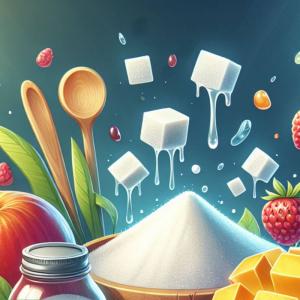By blocking the pores with excess sebum and dead skin cells, a favorable environment is created for the development and multiplication of bacteria, such as cutibacterium, formerly known as Propionibacterium acnes.
This is how white dots, black dots or pimples (comedones), skin lesions specific to acne appear.
Papular lesions and pustules appear most frequently on the face, but acne can also affect other areas of the body, such as the back, chest or shoulders. Depending on the severity of acne , this dermatological condition can cause emotional stress and permanent skin damage - scars.
Various creams and special products for acne are available, but acne can have a persistent character , and if the cause of its appearance is not established, the solutions available on the market may prove useless or have a short-term effect. The pimples that appear on the face heal, disappear, after which others reappear, which causes the patient to be frustrated. Specialist consultation with a dermatologist is necessary to establish the cause of acne, assess the severity of the condition and recommend a personalized treatment.
Acne causes and risk factors
The appearance of acne can be determined by:
- Excessive sebum production - when the sebaceous glands produce more sebum, the risk of pore blockage increases
- The accumulation of dead skin cells in the pores leading to their obstruction
- The development of bacteria in the pores.
However, other risk factors are also involved in the appearance of acne:
- Genetic predisposition - studies claim that there is a higher probability that a patient will suffer from acne, if one of the parents also faced this problem
- Hormones - the increase in the level of androgen hormones (male sex hormones) can lead to acne, therefore teenage boys are more prone to acne. During puberty, the level of these hormones increases normally, both in males and in females, determining, among other things, the increase in volume of the sebaceous glands and, therefore, sebum production.
- Pregnancy - the hormonal fluctuations and changes specific to pregnancy are also a cause of acne.
- Administration of drug treatments - administration of drugs that contain hormones (corticosteroids and lithium) can cause acne.
- Age - although acne appears at any age (baby acne , hormonal acne in women, even around menopause), it mainly affects teenagers and young people.
Factors that aggravate acne
Although they cannot cause acne, the following factors make acne worse:
- An inappropriate diet - according to specialized studies, the relationship between diet and acne is quite controversial. Certain studies claim that some foods with a high glycemic index contribute to the worsening of acne, while a diet based on foods with a low glycemic index does not carry this risk. The high glycemic index is associated with processed and ultra-processed products, rich in sugars, sweeteners, etc
- The stress
- The use of helmets, very tight clothes , made of synthetic materials that do not allow the skin to breathe
- Atmospheric pollution , a high level of air humidity
- The use of inappropriate cosmetic products , as is the case with comedogenic ones, which "clog" the pores.
How does acne develop?
Acne develops through the interaction of the following factors:
- Follicular proliferation of the epidermis
- Excessive production of sebum
- The activity of the bacterium cutibacterium ( Propionibacterium acnes )
- Inflammation.
Acne vulgaris manifests itself with open or closed comedones, papules and pustules. It affects the skin areas with the highest concentration of sebaceous follicles : the face, the back and the upper part of the chest.
Types of acne
Depending on the causes involved in the appearance of acne and its appearance, several types of acne are distinguished in medical practice:
- Acne vulgaris is the most common. It can be recognized by the presence of open comedones (black dots) or closed ones (dots, white pimples). It mainly appears on the face, back, chest, but other areas of the body are not excluded.
- Papulo-pustular acne - is a form of moderate acne that involves the presence of inflamed lesions, small pink swellings that can be sensitive to touch. Initially, the papules become inflamed, and in the presence of bacteria they acquire a yellowish-white color in the center (pustules with pus). It is not recommended to squeeze or remove them at home because the inflammation can worsen and there is a risk of scarring.
- Cystic acne and conglomerated acne - are severe forms of acne, manifested by deep, large and painful lesions, full of pus, which can leave long-term scars.
- Neonatal acne - appears in infants, usually in the first months of life, hence the name baby acne. They appear in the form of small comedones or pustules and usually disappear by themselves in a few weeks or months.
Acne diagnosis
To control acne, it is essential to consult a specialist dermatologist. The dermatologist is able to establish a precise diagnosis based on which he will recommend an appropriate acne treatment for you, taking into account the type of acne and the severity of the condition.
During the specialist consultation, the skin lesions and their location are evaluated through a careful examination of the skin.
The doctor will ask you questions about the duration and persistence of acne lesions and your medical history - medical conditions that can influence the appearance of acne, treatments administered, family history, skin care routine and others.
In more complex cases, the doctor may recommend additional tests and investigations , such as taking samples from the lesions to rule out other skin conditions or blood tests to evaluate hormonal imbalances or other medical problems.
In the case of patients with acne, hirsutism, bradymenorrhea/amenorrhea, laboratory investigations such as:
- Testosterone
- Dehydroepiandrosterone sulfate (DHEAS)
- Luteinizing hormone (LH)
- Follicle stimulating hormone (FSH).
The listed investigations help to detect the origin of acne . Acne can be an effect of hyperandrogenism in micropolycystic ovary syndrome or severe hormonal conditions: ovarian hyperthecosis, virilizing ovarian or adrenal tumors.
Micropolycystic ovary syndrome is defined by clinical hyperandrogenism (acne, hirsutism, alopecia) and/or biochemical (increased testosterone level, DHEAS), bradymenorrhea (less than 9 menstrual cycles/year) or amenorrhea (absence of menstrual cycles), micropolycystic ovaries documented by ultrasound.
Acne treatment
Pharmacological treatment of acne includes multiple classes of drugs. The most common are:
- Retinoids (isotretinoin)
- Antibiotics (tetracycline, doxycycline, clindamycin)
- Estroprogestative oral contraceptives
- Antiandrogenic (spironolactone, cyproterone, finasteride).
Sometimes the oral medication is combined with certain products - creams, lotions, but it is essential that the treatment is prescribed after the specialist consultation . If excess sebum is the cause of acne, the doctor can recommend drugs that reduce the exacerbated sebum production. If the bacterial infection is the one that led to the appearance of acne, the doctor will also recommend the necessary antibiotic to fight the infection.
Most acne medications are prescribed for a fixed duration, from 4 to 8 weeks. Complete healing of acne can take from a few months to a few years, depending on the complexity of the case.
Other acne treatment options include:
- Light therapy
- Chemical peeling
- Drainage and extraction with the help of special tools (indicated especially when pharmacological treatment has not fully resolved the removal of comedones - white, black dots or cysts in the case of cystic acne)
- Steroid injection.
Acne is a problem with a major psychosocial impact, especially among young people . Frequently, patients are disappointed with the results of the treatment. An individual and personalized treatment is necessary to combat acne, considering the complexity of the condition, the multitude of pharmacological agents available with possible interactions and adverse reactions.
In some cases, the integrated diagnostic and therapeutic approach to acne within a multidisciplinary team consisting of a dermatologist, endocrinologist and gynecologist is recommended.







